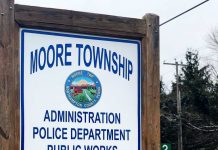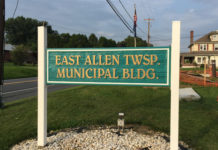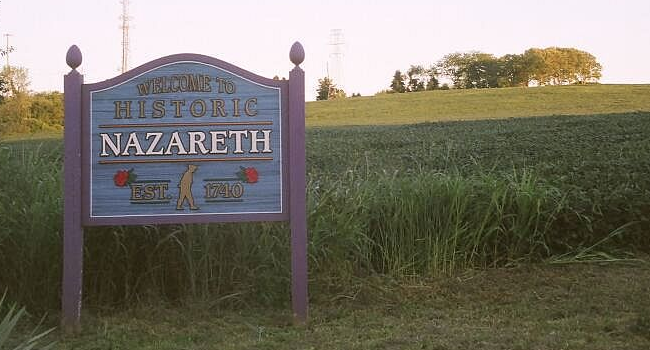Today, I am visiting the new Bath Museum in the borough’s municipal building. In the past I have written a number of columns on the borough’s history and heritage.
Over the years Margie Rehrig, Diane Lager, Evelyn Hartzell, Agnes Melinsky, Carol Bear-Heckman and Blaine Hoffmeister have shared their memories with me. Bath is a small, pleasant borough with a population of 2600. I have referred to Bath as a “Cradle of History.” Their history can be traced back to 1737, 39 years before the Declaration of Independence and before the formation of Northampton County.
The early settlers were Scotch-Irish who came to America for the same reasons as immigrants of the present day. Freedom, opportunity, the dream of a new life remain the magnet drawing immigrants to this great country.
Some of the first settlers came from the Craig Settlement, which is now part of East Allen Township. The settlement there was in 1727. It is difficult to comprehend the struggles of these colonists. They faced Indian troubles, clearing the land to farm the fertile soil, feed and house their families and face harsh winters. Through perseverance and hard work, they eventually made their new country home.
Later businesses were formed, schools, churches were built and a government was organized. They were members of the Presbyterian Church; their first church was probably the first house of worship in Northampton County.
In 1737 Bath was a village, the name did not appear until the settlement was organized and named Bath in 1810. The new community was laid out by Col. James Ralston, whose family was prominent in the Craig settlement.
The Revolutionary War interrupted the village’s progress. The desire for independence saw the colonists organize the Northampton Militia, a predecessor of the United States Army. The men were raw and untrained, but determined to fight for independence. They faced one of the most formidable armies in the world, the British. They were led locally by men whose names have faded into history General Robert Brown, Gen. Lattimore, and Col. John Siegfried. Some of these past heroes rest in honor in the Jane Horner Cemetery in East Allen Township. The cemetery is maintained by my friend Peggy Moser and a group of dedicated volunteers.
After a long and costly war, independence was gained and now the new country could grow and prosper. In 1800 the small village only consisted of a few homes, but its location made it very important as seven roads intersected in the village. Wagons of grain and goods moving through the community became a familiar sight.
Bath today remains an important transportation hub, bringing an excessive volume of traffic through the community each day. Two of the most prominent families were the Siegfried and Steckel families.
They owned farms, gristmills, tanneries and event a distillery. Carol Bear-Heckman and her husband have done a marvelous job restoring the historic Steckel home and a number of other historic buildings in Bath.
In two weeks we’ll be back in Bath.








